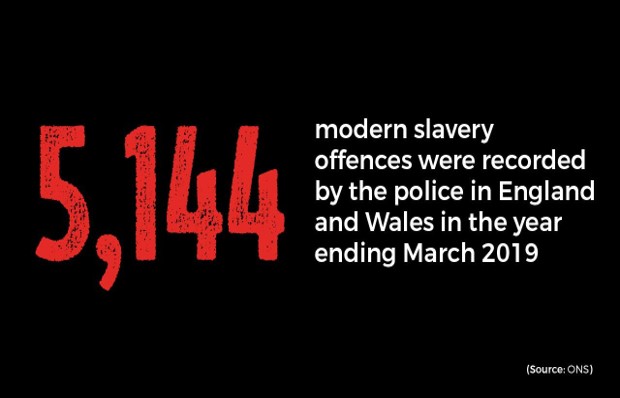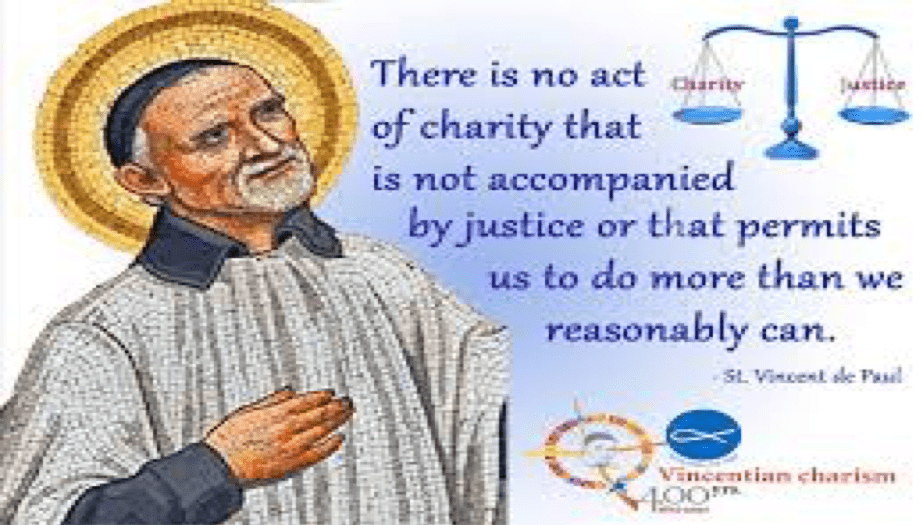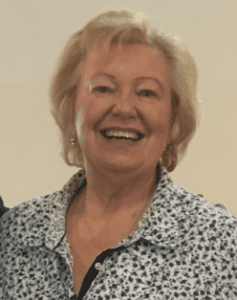Vincentian action for victims of Modern Slavery
IMAGINE YOUR DREAMS BEING EXPLODED – AND EXPLOITED!
Slavery is alive today! Human trafficking is a booming business being propelled by both the powerful and on-demand sexualized culture, addicted to cheap products and services.

“Sorry Dee, it’s urgent!” The phone call interrupted our zoom discussion about Dr Julia Tomas’ work with The Passage Homeless Day Centre, London UK. Julia’s role co-ordinating and training staff responses to victims of modern slavery is far reaching. On this occasion, the office called so she could process a recent arrival. The close connection between homelessness, modern slavery and trafficking of people has become starkly obvious in recent years.
On July 31, 2020, World Day against Trafficking, statistics were quoted and information shared about how best we can highlight and act on our growing awareness of Modern Slavery – Human Trafficking – the exploitation of fellow human beings. What can I do? Educate myself. Then act on it!
Our Vincentian Family NGOS at the United Nations all have different avenues to explore, such is the range of reasons, countries and experiences of trafficked people. Sr. Michelle Loisel, DC in the USA heads up Just Freedom which works directly with people trafficked. Link: https://justfreedom.org/?fbclid=IwAR25AFIAp2ykjhMvoL733I7OfzDroKhgk21BiBhhmvn1e2xCxX2LdhJFD1g
Here in the UK and Ireland, Vincentians co-operate with regional migration services, such as local police, Bakhita House and Santa Marta in London. The Church marks 8 February, the feast day of St Josephine Bakhita, as the International Day of Prayer and Awareness against Human Trafficking. The patron saint of Sudan’s life was a journey from slavery to freedom and faith, and her life story inspires hope in the face of indifference and exploitation.

The Daughters of Charity in Colombia have created a successful system of increased awareness of human trafficking which is expanding to new locations. “Workshops and trainings help participants to recognize the dynamics of human trafficking. The ‘Journey for Life’ program that was initiated in Colombia has trained many trainers using a clear educational approach, and now has grown beyond Colombia’s borders to similar programs established in Ecuador, Panama, Venezuela and Brazil.”
As part of the FAMVIN HOMELESS ALLIANCE’s endeavour to build global capacity within the Vincentian Family on homelessness, the ‘Refugees and Human Trafficking’ conference should prove a beacon of hope in highlighting the Vincentian response to the homelessness that is experienced by refugees, trafficked persons and asylum seekers. Find updates here: https://bit.ly/2NCQCBG
#WorldDayAgainstTrafficking #HumanTrafficking #EndHumanTrafficking
So what does “trafficking” mean, and why are people trafficked into modern slavery?
- People are trafficked for sexual exploitation, forced labour, forced begging, forced marriage; for selling children and as child soldiers, as well as for removal of organs;
- Women make up 49% and girls 23% of all victims of trafficking;
- Sexual exploitation is the most common form of exploitation (59% share) followed by forced labour (34% share);
- Most victims are trafficked within their countries’ borders – those trafficked abroad are moved to the richest countries.
The Annual Report from The Passage Anti-Slavery Project captures clearly their impact – https://passage.org.uk/wp-content/uploads/2020/06/The-Passage-Anti-Slavery-Project-Report-2018-2020.pdf
‘66% of survivors were male, 31% were female and 3% were transgender. The prevalent types of alleged exploitation were forced labour/labour exploitation (61%), sexual exploitation (16%) and domestic servitude (11%). 6% of cases involved historic child slavery. Potential victims originated from 23 countries, the most prevalent being Romania (12, 20%), the UK (9, 15%), Poland (8, 13%), Brazil (4, 7%), Bulgaria (3, 5%), Ireland (3, 5%), Latvia (2, 3%) and Nigeria (2, 3%).’

Modern slavery – It’s happening all around us in places we might visit on a regular basis – local hand car washes, nail bars and takeaways.
As a Vincentian, what can you do?
Using the simple language and actions of Primary School, London education project on identifying trafficked victims, you might keep a look out for these 5 signs of slavery:
- SUSPICIOUS PERSON GUARDING THEM
- LOCAL LANGUAGE IS A STRUGGLE
- ADVERTISED FOR MONEY
- VICTIM OF ABUSE
- EMOTIONAL
- https://www.youtube.com/watch?v=_z9FUIpybRk
THE VINCENTIAN WAY is to SEE – JUDGE – ACT. Be Like Vincent!
 Dee Mansi is a lay member of AIC and Vincentian Collaboration Commission; a retired School Principal, Schools Inspector and Leadership in Education Lecturer. Dee is Irish, living in London with her husband and son, she travels in Europe and beyond.
Dee Mansi is a lay member of AIC and Vincentian Collaboration Commission; a retired School Principal, Schools Inspector and Leadership in Education Lecturer. Dee is Irish, living in London with her husband and son, she travels in Europe and beyond.
Opinions expressed are the author’s own views.







Thank you, Dee. Very good to get the inspiring article.
Claire